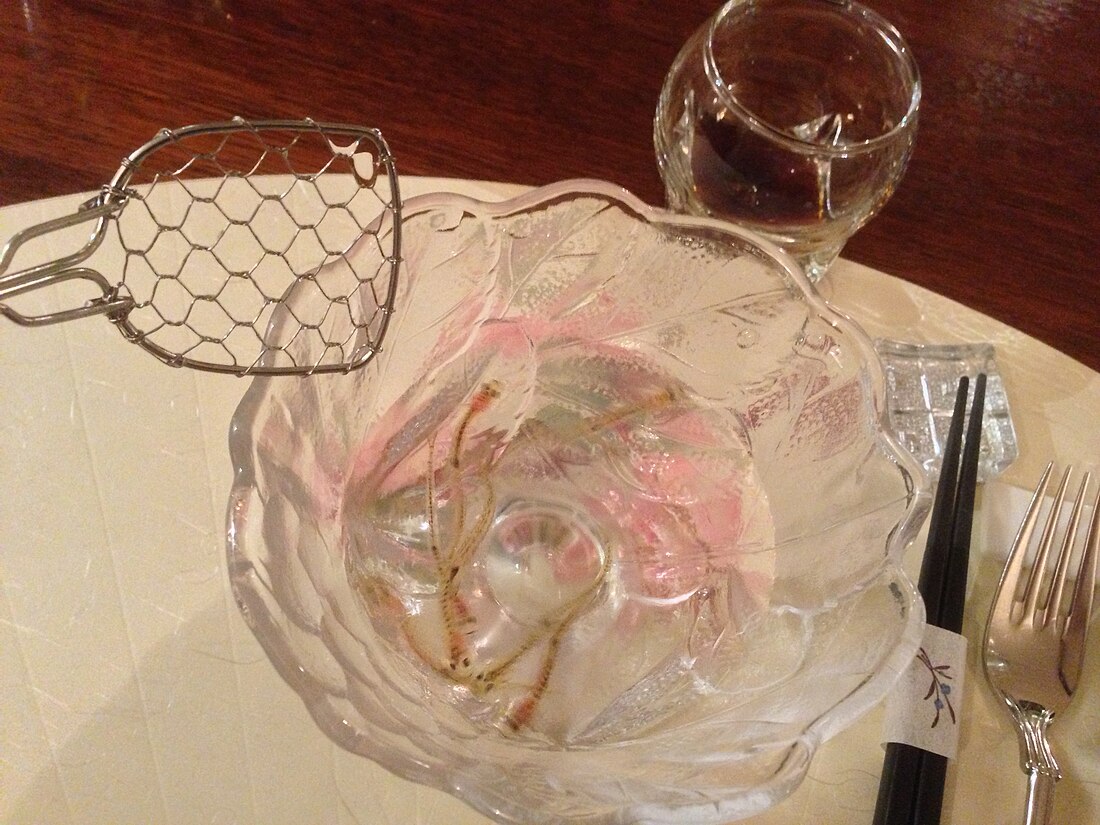Top Qs
Timeline
Chat
Perspective
Odorigui
Consumption of live, moving seafood in Japanese cuisine From Wikipedia, the free encyclopedia
Remove ads
Odorigui (踊り食い, literally "dancing eating") is a mode of seafood consumption in Japanese cuisine.

Odorigui refers to the consumption of live seafood while it is still moving, or the consumption of moving animal parts.[1] Animals usually consumed in odorigui style include octopus, squids, ice gobies, and other similar animals. Consumption of live seafood without remarkable movements, such as sea urchins, is usually not included in odorigui.
Remove ads
Examples
- Katsu ika odori-don (活いか踊り丼) lit. "living squid dancing rice bowl". In this dish, a mostly-complete squid is used, and its muscles twitch and move vigorously when soy sauce is poured over the rice.
- Shirouo-no-odorigui (素魚の踊り食い) goby fish dance while being eaten
- Odori ebi (踊り海老) dancing shrimp
See also
- Ikizukuri, the preparation of sashimi from living animals
- Odori ebi, shrimp eaten alive in Japanese cuisine
- Drunken shrimp, shrimp sometimes eaten alive in Chinese cuisine
- Sannakji, octopus eaten alive in Korean cuisine
- Yin Yang fish
- Dojo nabe
References
External links
Wikiwand - on
Seamless Wikipedia browsing. On steroids.
Remove ads
